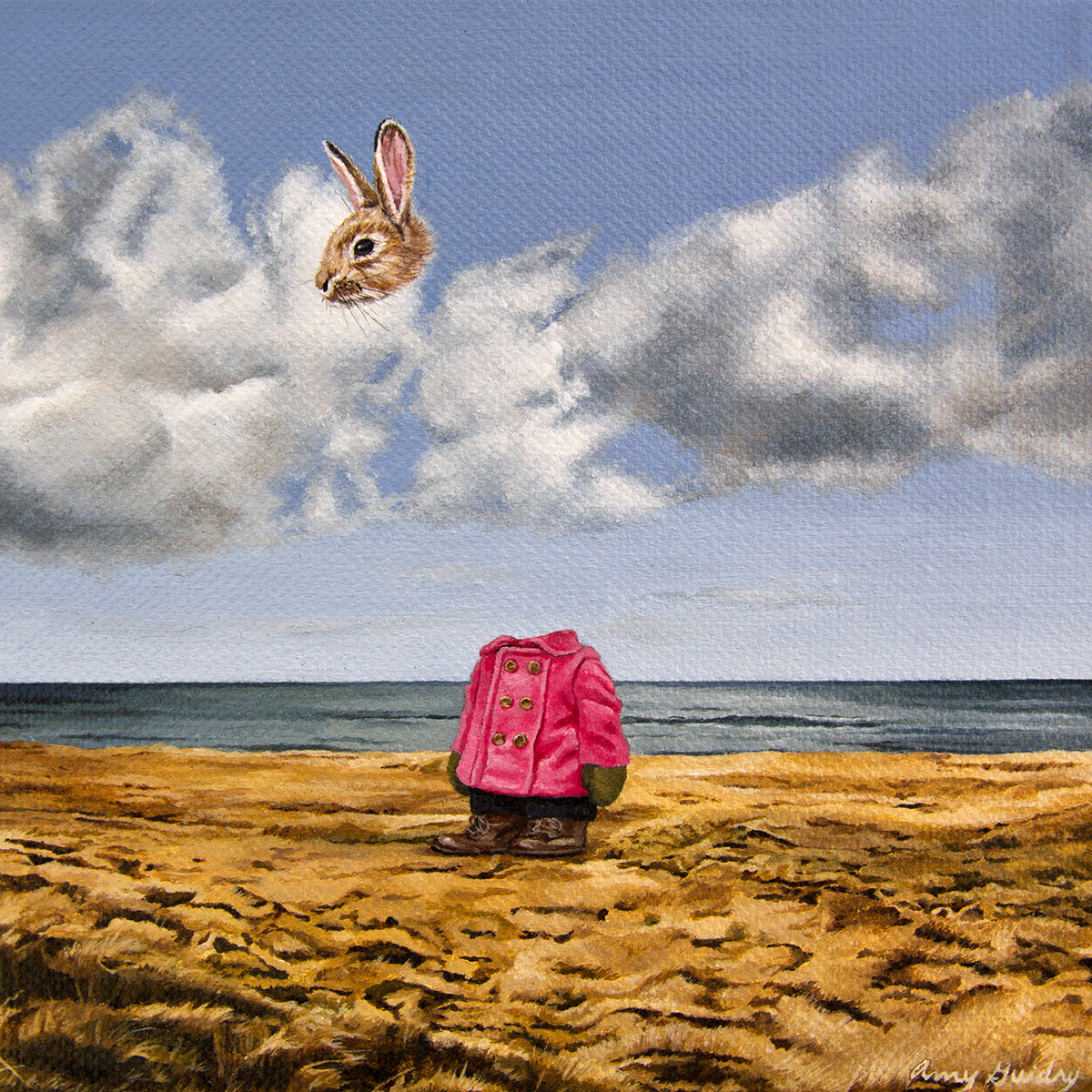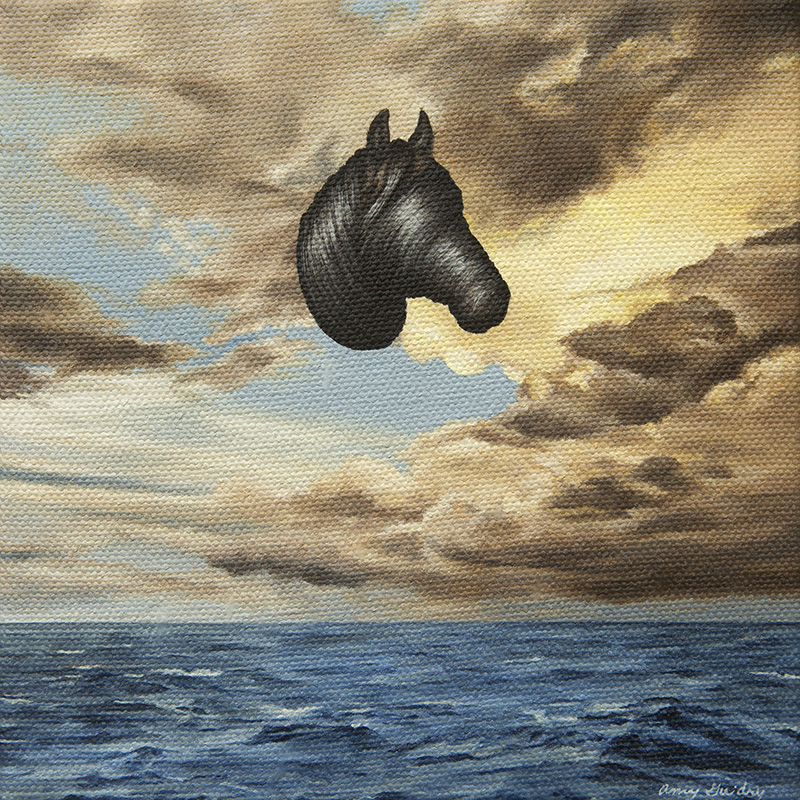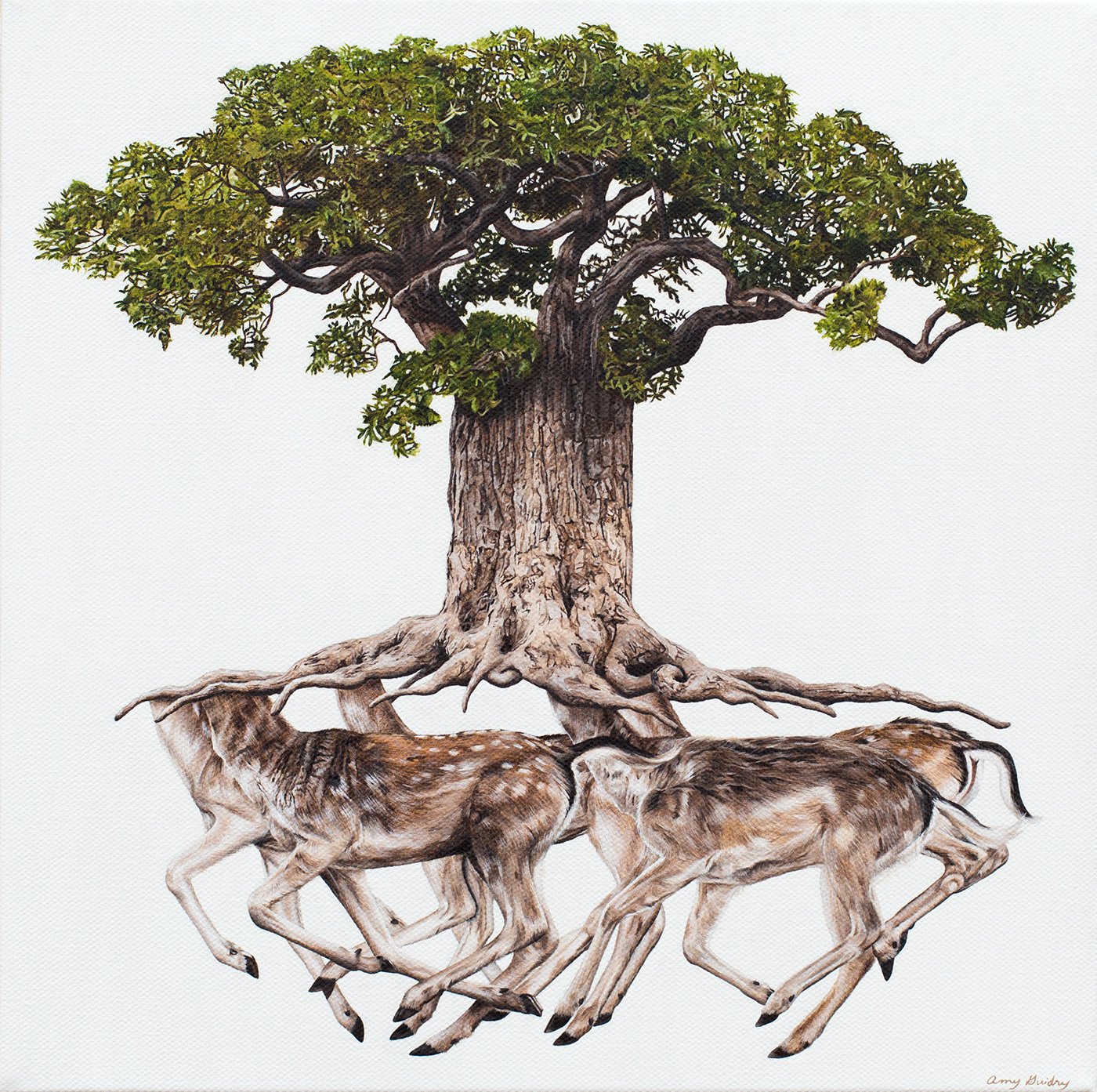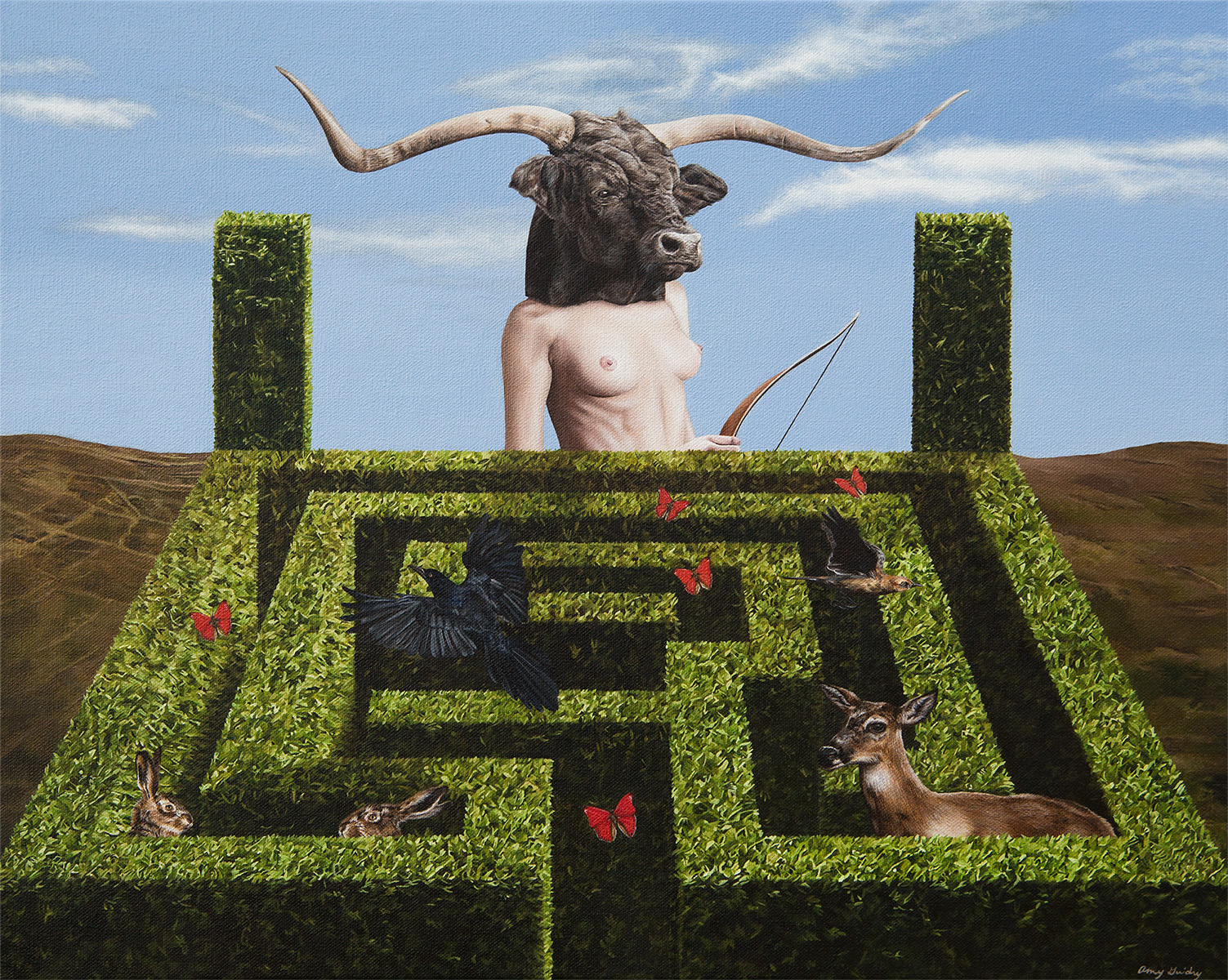Each of Amy Guidry’s paintings lands like the end note in an alternate universe parable. Lovely and lightly twisted, these are stories you don’t need to know the beginning of in order to feel the impact of the end.
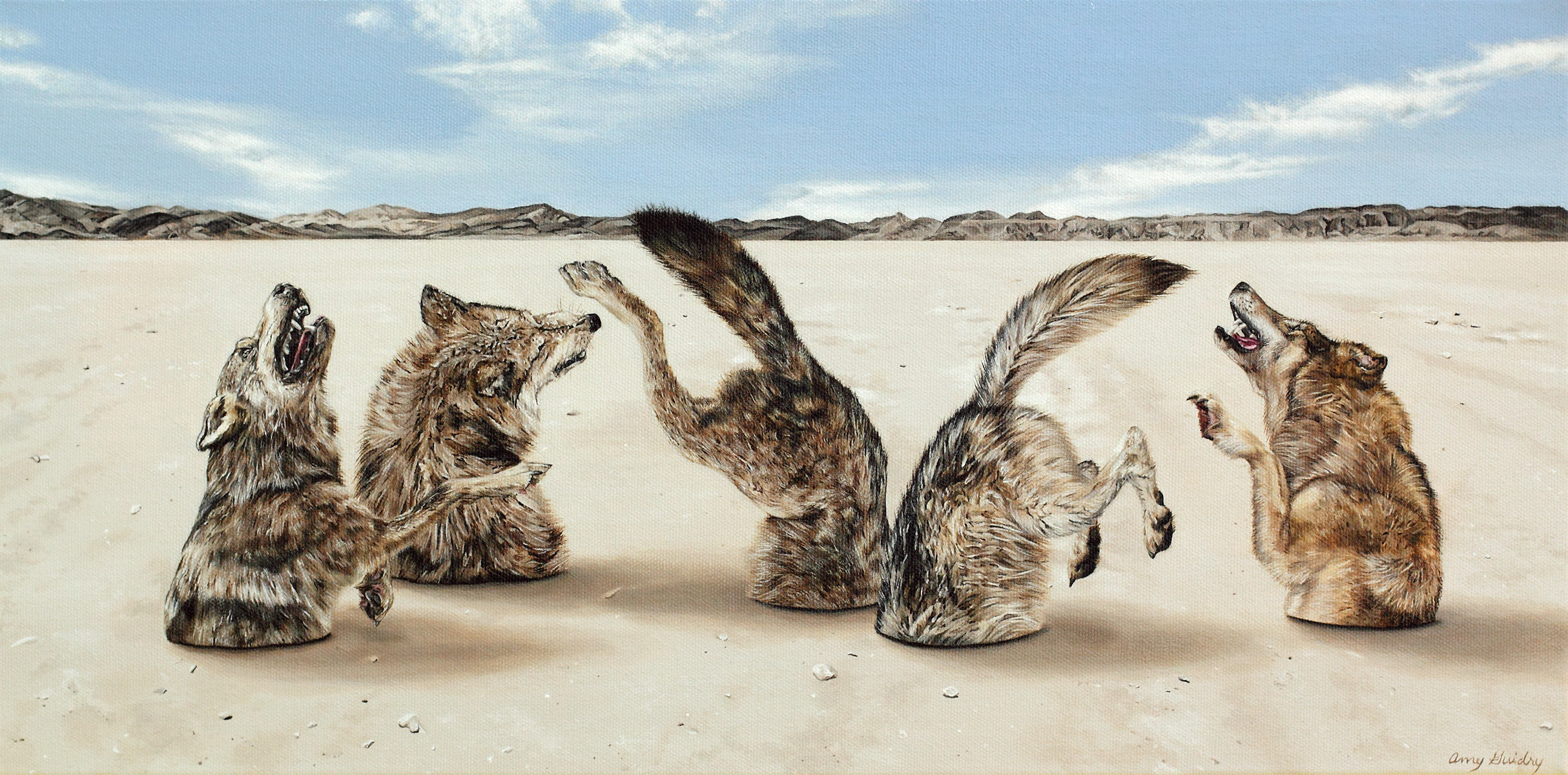
Suzannah Showler: There are some human figures in this series (or sometimes their dislocated body parts), but for the most part, the paintings seem to be really interested in exploring and celebrating the animal world. What compels you about animals? What does it mean to elevate them as art?
Amy Guidry: I used to paint humans much more frequently and found that much of the time, viewers would ask about the person I painted—who they are, how I know them, etc. For some, it became more of a biographical piece about the model. As my work began to shift to this current series, I wanted to move the focus to animals and get people thinking about who animals are for a change. I wanted people looking at animals in terms of having thoughts and feelings and caring for their families. When I do include human subjects, I take steps to lessen the “personalization” of the human by closing their eyes, using angles that show less of the face, or just making them look the same. In some paintings, I even integrate animals with humans to emphasize our connection to nature.
SS: In describing this series, you talk about “connections between all life forms and the cycle of life.” Can you tell me a bit more about what that means for you and how you explore it in your work?
AG: When I started this series, I was looking to focus on environmental concerns and animal welfare. Nature is a delicate balance of different species relying upon each other. If one is removed, it has a domino effect on all other species because everything is connected. Whether it’s a bug, a tree, or a human, all are connected and each have a role in nature. One cannot exist without the other, therefore it is of the utmost importance that we care for each and every living thing.
SS: Tell me about your process: where does a painting begin for you? Does it start with an image, a concept, a technique, or something else entirely?
AG: All of my paintings begin as a thumbnail sketch. They are about one-inch square, sometimes smaller, and I use them to just get the basic idea down. Sometimes I have an image in mind, other times it may be a concept that I’d really like to cover through my work. Either way, I do tons of thumbnail sketches, which may just be slight variations from one to the next or they can be wildly different. I go through this process just so I can flesh out an idea until I feel like I have “the one.” I save all of these sketches because I’ve actually created subsequent paintings from ideas that I didn’t feel strongly about at the time. Just looking at them with fresh eyes can lead to something new.
SS: This work has a quiet commentary running through it about human intervention in nature: there are these recurring images of blindness, dismembered and disembodied animals, barren landscapes. Are these things you think about when you work, or is that meaning overlaid after the fact?
AG: I certainly think about that before I even put paintbrush to canvas, but I have to compartmentalize it by the time I’m executing the painting. These are issues that I think about all the time and it’s because of that concern that I do what I do. Once I’m painting, I have to put on blinders, though, just to focus on my technique and look at everything in terms of color and line and shape, without getting too emotionally bogged down.
SS: Can you tell me a bit about the role Surrealism plays in these paintings?
AG: Surrealism couldn’t possibly be a better way to convey my message. I’ve been inspired by imagery that comes to mind when first falling asleep or through free association. What seems illogical can come to life through painting. Truthfully, I do feel like what I paint is a mirror-image of our reality, though. Maybe a Through the Looking Glass reflection, but a reflection nonetheless.
SS: Is there anything you can tell me about this work that someone who doesn’t have expertise might not see or appreciate?
AG: I think people need to realize this: they are much more astute when it comes to art than they give themselves credit for. True art will elicit an emotional response from someone, whether it’s a positive or negative reaction. For those that enjoy my work, they often tell me that something resonates with them. It may not be exactly what I expect the viewer to respond to, but it’s in the ballpark. There have been times when someone finds my work “dark” and therefore they are unsure of it. I would still consider that an accurate response because I deal with some tough issues in my work. Animals are beautiful, nature is beautiful, and I’m trying to create something that is beautiful but at the same time sends a message. Either way, I want to draw attention to these issues and inspire others to take action, even if it’s just small changes because every little bit helps. That’s the takeaway I hope for when anyone looks at my work, whether they have an art degree or not.

